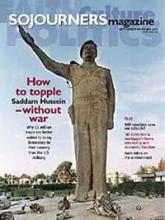What's the sound of a policy wonk clapping? I don't know. But with the publication of Myron Orfield's American Metropolitics, I suspect we're about to find out what a herd of them sound like.
For the last few postmodern decades, anecdotes, not facts, have driven public policy development. Personal profiles and individual reflections of abuse or neglect by government or business make for provocative stories on the 11 o'clock news. For years massive amounts of statistical evidence have detailed corporate corruption, but only when Ken Lay became a poster child did Congress launch investigations.
American Metropolitics is a flashback to a time when solid research dominated policy debate. Orfield, a state senator from Minnesota and director of the Metropolitan Area Research Corporation, has written an intelligent and insightful book detailing the changing nature of the suburbs of major metropolitan areas and what that means socially and politically. This exhaustive work undergirds stories like those offered in Barbara Ehrenreich's Nickel and Dimed; together they make a compelling case for coordinated policy changes to develop sustainable metropolitan regions.
Orfield's American Metropolitics offers cutting-edge research and does for the nation what his earlier book Metropolitics did for the Twin Cities. The book is chock full of graphs and maps; demographic information becomes highly comprehensible in demonstrating that neither the cities nor the suburbs are as monolithic as often assumed. Orfield provides visual evidence of the destabilization of neighborhoods, whether by disinvestment tied to racism or by an insufficient tax base created by inefficient land use.
Read the Full Article
